Confronting the Opioid Epidemic in the Roofing Industry

By Karen L. Edwards, RCS Editor.
Trent Cotney of Cotney Construction Law presented at the NRCA Legal Resource Center seminar about the opioid crisis in the roofing industry.
We had the privilege of being part of the NRCA’s Legal Resource Center seminar in New York City to learn about issues affecting the roofing industry. On day two of the seminar, Trent Cotney spoke to attendees about the opioid crisis. He began by saying that the roofing industry is just not talking enough about this issue. The conversations that are happening seems to be centered all about marijuana.
Trent says when he talks to people about opioids, he gets two responses. “I either hear agreement that ‘yes this is a problem and we need to do something about it’ and the other response is ‘oh its not a problem in our shop’, but it’s affecting everyone, you just don’t know it yet,” explained Cotney. He says that as employers we need to look inside our own shops and educate our employees on non-opioid pain management.
What are Opioids?
Opioids are painkillers. They have generic names, brand names and street names. It’s important to understand the street names because that is what your team members will refer to it as.
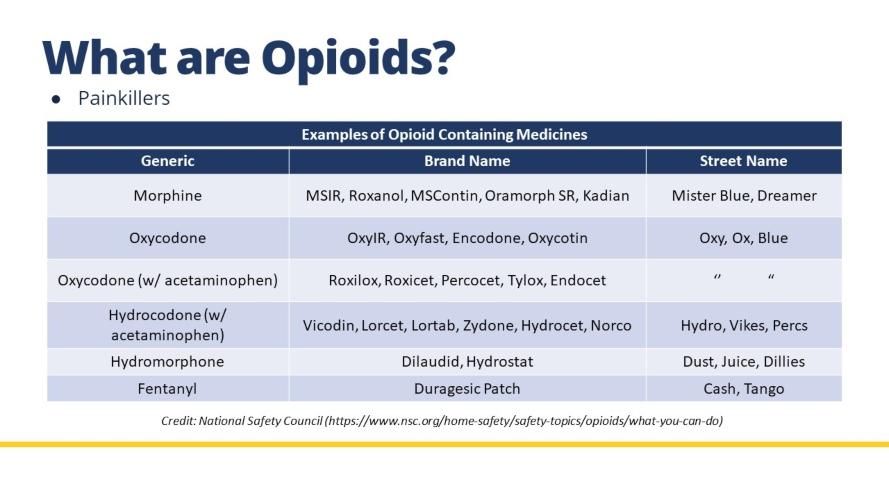
Trent shared with the group his own experience with being prescribed an opioid (Oxycontin) following jaw surgery to extract a wisdom tooth fused to his jaw. During surgery, they hit a nerve, which caused excruciating pain. He knew that he should be cautious with Oxycontin and he didn’t really want to take it but the pain was unbearable. He gave in and took one of the pills.
“It was an out of body experience,” Trent explained. “My body was over there and my mind somewhere else.” He decided at that moment that he would never take another one. He relied on over-the-counter pain relievers to manage the pain.
He is extremely passionate about talking about opioids in the construction industry in particular because he lost a very good friend to an opioid overdose. His friend was a successful business owner of a commercial roofing company who suffered an injury, was prescribed an opioid medication and it got the best of him. He was on the verge of entering treatment when he passed away.
Understanding Fentanyl
Cotney helped the audience understand Fentanyl. He explained that Fentanyl is a synthetic opioid that is directly attributable to increases in deaths. A lethal fentanyl dose is 2 milligrams. Two milligrams are a tiny amount as you can see from the image of it beside the penny.

Photo courtesy of https://www.dea.gov/galleries/drug-images/fentanyl (#4 of 17)
One of the problems with Fentanyl according to Cotney, is that it is incredibly easy to transport. They make it in small white pills and just pop it in a Tylenol bottle. Cotney shared stats that show opioid deaths rose from 2014 – 2015 by 73% and that is largely attributable to Fentanyl.
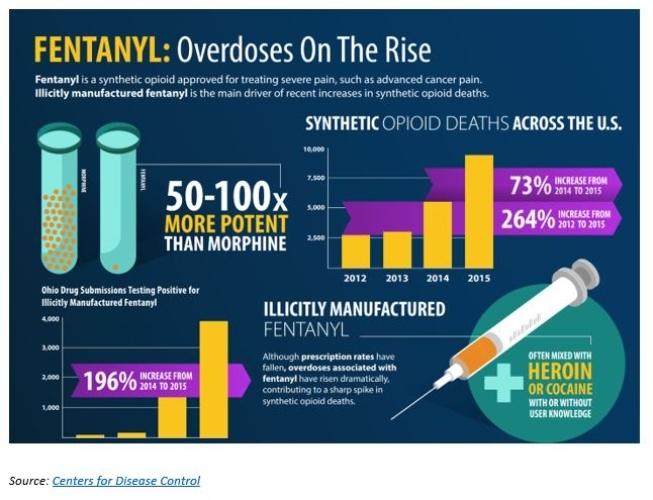
Opioids in Construction
The construction industry is one of the top industries linked to opioid abuse and deaths. Construction workers’ injury rate is 77% higher than other industries. In Massachusetts, construction workers represented roughly 25 percent of all fatal opioid overdoses among workers from 2011 – 2015. In Ohio, construction workers were seven times more likely that other workers to die from an opioid overdoes than other workers between 2010 – 2016.
Cotney shared that there are also costs to employers related to the opioid epidemic including safety concerns, loss of employees and longer time off. Because opioids mask pain, often workers will continue to work before their injury has healed. They remove the person from the pain. It makes them feel like they have healed, even when they have not, which is why they can be the reason behind repeat injuries that could result in OSHA fines.
Legislation Regarding the Opioid Problem
Cotney said that there is federal legislation regarding the opioid problem. The Budgeting for the Opioid Addiction Treatment Act was introduced in the Senate on February 7, 2019. It imposes a one cent per milligram fee on the sale of active opioids by the manufacturer, producer, or importer. The fees will go toward treatment.
States are taking action as well, Cotney shared. Florida’s HB 451, effective July 1, 2020, requires FL healthcare providers to provide patients with information related to opioids before providing them. Texas SB 315 passed in 2017 and it strengthened the ability of the Texas Medical Board to regulate the prescribing of opioids. Minnesota, Wyoming and Montana introduced legislation limiting the amount of time initial ‘naïve’ patients may receive opioids to seven days.
We are now beginning to see more lawsuits. The state of Oklahoma sued Purdue Pharma and other opioid manufacturers. Purdue Pharma settled for $270 million and the judge ruled against Johnson & Johnson for $572 million in that case. The Chicago Carpenters & Operating Engineers and the Philadelphia Electrical Workers both filed suit against Purdue Pharma. Additionally, there are more than 35 state and federal lawsuits.
Preventing Abuse
Cotney shared things that employers can do to help prevent abuse. He said the first thing to do is to update your safety manual to help superintendents, foremen and job/project managers recognize the signs of impairment. Use images in the manual of what impairment looks like.
Toolbox talks on opioids are incredibly important. Educate your employees that there are alternative treatment options for pain that do not involve opioids. Reach out to your insurance companies as well. They may be able to come in as a third-party consultant to provide information and education.
Employee Assistance Programs (EAP) allow employers to offer confidential access to treatment. Educate employees on EAP services, what it is and how they can get access to it. Consider making it a topic at a toolbox talk.
Trent also said that while many companies have a drug policy in place that addresses illegal substances, many do not have a prescription drug policy in place. He shared this sample policy as provided by the National Safety Council:
It is a violation of our Drug-Free Workplace Policy to use, possess, sell, trade, and/or offer for sale alcohol, illegal drugs, or intoxicants. Prescription and over-the-counter drugs are not prohibited when taken in standard and/or according to a physician’s prescription. Any employee taking prescribed or over-the-counter medications will be responsible for consulting the prescribing physician and/or pharmacist to ascertain whether the medication may interfere with the safe performance of his/her job. If the use of the medication could compromise the safety of the employee, fellow employees, or the public, it is the employee’s responsibility to use appropriate personnel procedures (e.g. call in sick, use leave, request change of duty, notify supervisor, notify company doctor) to avoid unsafe workplace practices. The illegal or unauthorized use of prescription drugs is prohibited. It is a violation of our Drug-Free Workplace Policy to intentionally misuse and/or abuse prescription medications. Appropriate disciplinary action will be taken if job performance deteriorates and/or incidents occur.
Workplace culture is also an important step to prevention. Trent urges companies to promote a culture of health and wellness that encourages self-care. It’s also important to support recovery in the workplace. That may be through connecting to your community. There are treatment centers that may be able to connect you with individuals who recovered from opioid addiction and abuse who would be willing to speak to your team about it. That’s a very powerful experience for everyone involved.
Dealing with Overdoses in the Workplace
Some of the signs of overdosing are that the person will have small, pinpoint pupils, they will be falling asleep/losing consciousness. It’s critical to keep the person awake. Once they lose consciousness, they have a much higher chance of death. They may have slow, shallow breathing, be making choking or gurgling sounds, appear limp and pale with skin that is blue or cold to the touch.
Cotney recommends 911 be called immediately and that every contractor have Naloxone in the office so it can be administered during an overdose. It’s critical to stay with the person until emergency responders arrive.
Ending the Epidemic
By understanding, educating yourself and your teams, we can end this epidemic that is affecting our industry. We have to take action and change our thinking about the individuals that are affected by opioid abuse and addiction. Many of them are hard-working family members who got caught in a vicious cycle of struggling with pain and still trying to provide for their families. With compassion and a culture of support and understanding, we can make a difference.
If you have questions on this topic, reach out to Trent Cotney at info@cotneycl.com.
About the NRCA Legal Resource Center
The NRCA Legal Resource Center acts as a legal advocate for roofing contractors throughout the U.S. on issues such as contract language, employee relations, regulatory compliance, payment provisions, insurance coverage, and codes and standards, ultimately saving them time and legal fees. Upcoming educational opportunities include the Legal Resource Center’s LegalCONF 2020—a one-day legal offering on Thursday, March 12 in Chicago, as well as its annual three-day seminar, Roofing Issues: Decks to Dockets, Oct. 14-17, 2020 in Austin, Texas.
For more information, please contact Alison LaValley at alavalley@nrca.net.
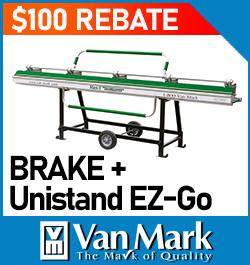













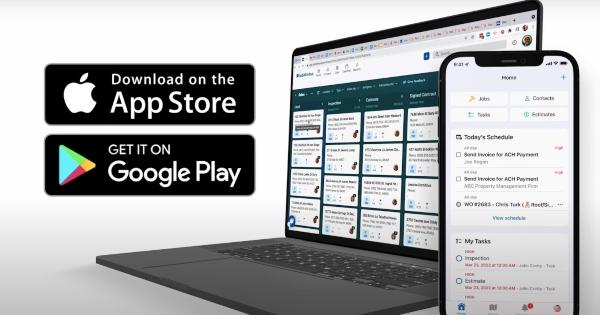
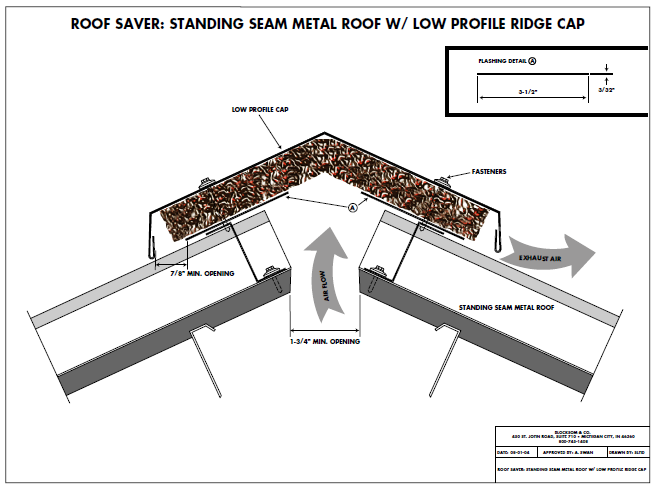







Comments
Leave a Reply
Have an account? Login to leave a comment!
Sign In